虽然自由市场为裁决稀缺性提供了理想的机制,但给予市场不受控制的自由并不能保证经济走向繁荣的线性进步。社会寻求通过监管市场和货币来缓解经济波动——这是政府的主要作用。政府提供被认为最好集体管理的商品和服务,或者限制市场以防止剥削等不道德结果。除了这些权力之外,政府还对货币的价格和数量施加一定的控制。有时,这种控制是仁慈的;在另一些情况下,它近乎专制。由于政府在法律上垄断了胁迫——包括在极端情况下使用武力——他们可以强制使用特定货币。这会产生积极和消极的结果。
根据任何执政理论,所有政府都不可避免地贬值其货币供应量以追求后稀缺的未来。真正的后稀缺性需要的不是聪明的财政策略,而是对物理宇宙及其纵的更深入的掌握。然而,政客们不能等待几十年或几个世纪才能获得科学突破。作为对不稳定和不确定世界的缓解措施,默认的反应是印更多的钱。
尽管政府拥有巨大的权力,但人们总是想方设法维护自己的主权。在许多经历着跨政权或王朝长期通货膨胀的文化中,围绕生命重大里程碑(出生、婚姻、死亡)的送礼仪式出现了传统,其中涉及硬资产的交换。通过这些文化习俗,个人在正式系统之外进行储蓄。没有一个领导人敢在不冒合法性以及潜在地位风险的情况下破坏此类仪式。
在现代,随着中央政府——无论是民主共和国、社会主义共和国还是其他形式——通过信息技术和互联网的进步而变得更加强大,个人如何保留获得健全货币的权利?中本聪在比特币白皮书中送给人类的礼物是一个技术奇迹,正值历史的关键时刻。
比特币代表了人类文明当前阶段创造的最好的货币形式。像所有货币一样,它具有相对价值。鉴于美元在美国金融体系中的主导地位,我们以美元计价对比特币进行估值。假设这项技术经久不衰,比特币的价格将随着美元的价格和供应而波动。
这篇哲学序言为理解比特币/美元价格周期的持续时间奠定了基础。迄今为止,已经出现了三个周期,每个周期每四年达到历史最高点 (ATH)。随着第四个周期四周年的临近,交易者应用历史模式来预测本轮牛市的结束。然而,他们经常这样做,而没有掌握为什么过去的模式有效,从而错过了为什么这种模式可能无效。
为了说明为什么四年周期已经过时,我将研究两个简单的图表。主要主题是货币的价格和数量,例如美元。因此,我分析了有效联邦基金利率和美元信贷供应的图表。次要主题是人民币 (RMB) 的价格和数量。在人类历史的大部分时间里,中国一直是地图上最富有的地区。在 1500 年至 2000 年的半个千年中断之后,它重新崛起为全球经济强国。问题是:每个比特币 ATH 的货币趋势是否有明显的拐点来解释峰值和随后的崩盘?对于每个四年周期,我都会概述当前的货币趋势,以将这些图表置于背景中。
● 美元图表白线:衡量美元信贷价格和供应的指标——美联储银行准备金和美国银行体系中其他存款/负债的总和。美联储每周公布这些数据。
● 绿线:联邦公开市场委员会(FOMC)设定的有效联邦基金利率。
● 金线:比特币/美元价格。
人民币图表中国经济对信贷的依赖程度甚至比美国还要高,因此我使用彭博经济研究的中国信贷冲量指数(12 个月百分比变化)。如果您检查名义 GDP 同比增长,也会出现类似的模式。
创世周期:2009–2013
比特币的创世区块于 2009 年 1 月 3 日开采,当时全球金融危机 (GFC) 席卷了全球机构。这场危机几乎使全球经济崩溃,但美联储主席本·伯南克通过 2008 年 12 月宣布并于 2009 年 3 月实施的无限量化宽松政策“拯救”了该体系。中国通过增加基础设施支出信贷来支持全球复苏。到2013年,美联储和中国人民银行(PBOC)在维持无限货币扩张方面动摇了。如下图所示,这导致信贷增长放缓或货币供应量彻底收缩,最终结束了比特币的牛市。
美元图表:
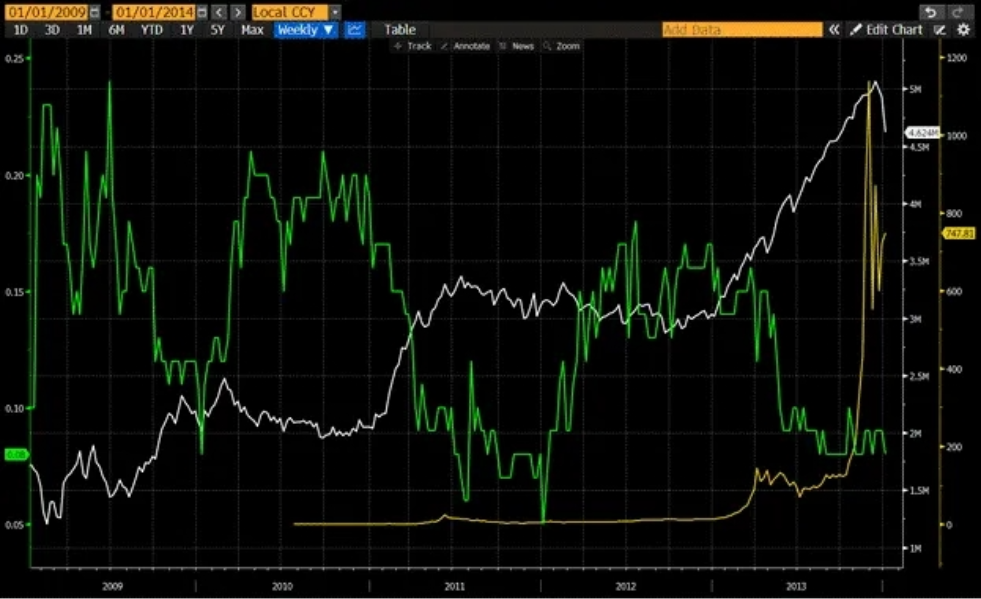
美元价格实际上触及 0%。供应急剧增加,在 2013 年底达到顶峰,然后回落。
人民币图表:
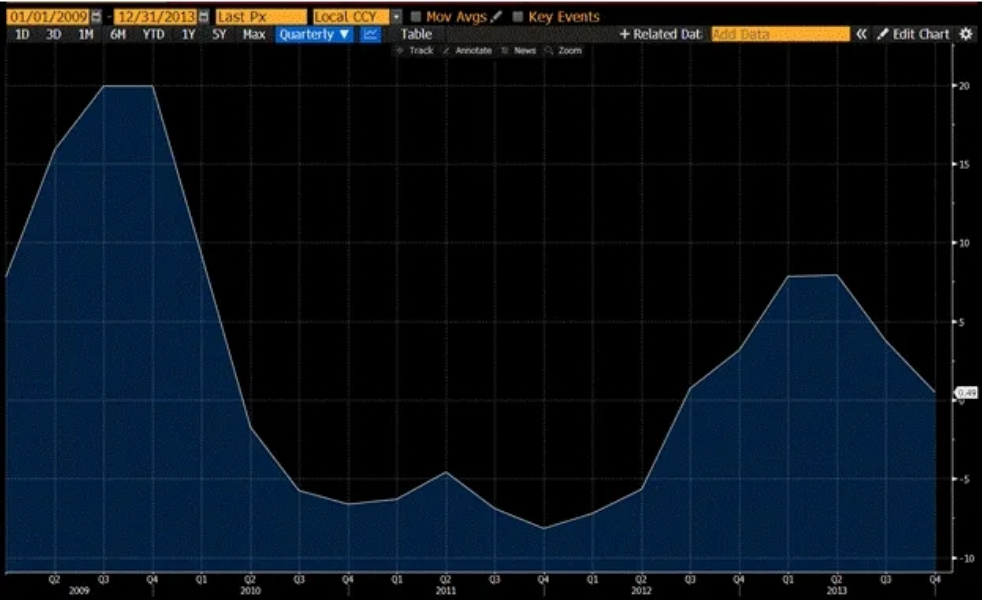
信贷增长的大幅增长使人民币充斥全球,数万亿美元流入比特币、黄金和全球房地产。到2013年,尽管增长仍然令人印象深刻,但增长速度已远低于之前的水平——与美元信贷放缓一致。美国和人民币信贷增长同步减速,打破了比特币泡沫。
ICO 周期:2013–2017
这个时代被称为 ICO 周期,因为以太坊的主网启动促进了通过公共区块链和智能合约进行代币发行的繁荣。比特币浴火重燃,不是美元推动,而是人民币飙升。如下图所示,2015年中国信贷冲动加速,而人民币兑美元贬值。美国供应收缩,利率上升。比特币在全球市场人民币流动性激增的推动下飙升。最终,人民币信贷增长较2015年峰值放缓,加上美国收紧政策,在2017年底压垮了牛市。
人民币图表:
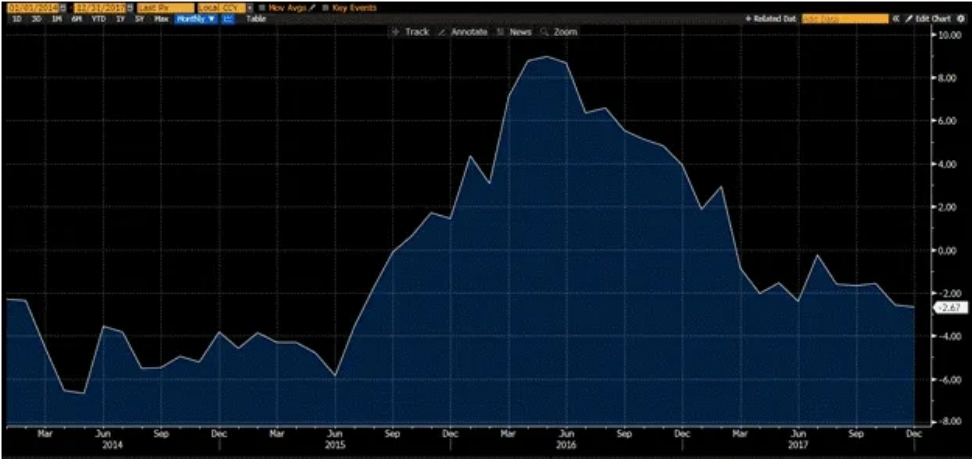
美元图表:
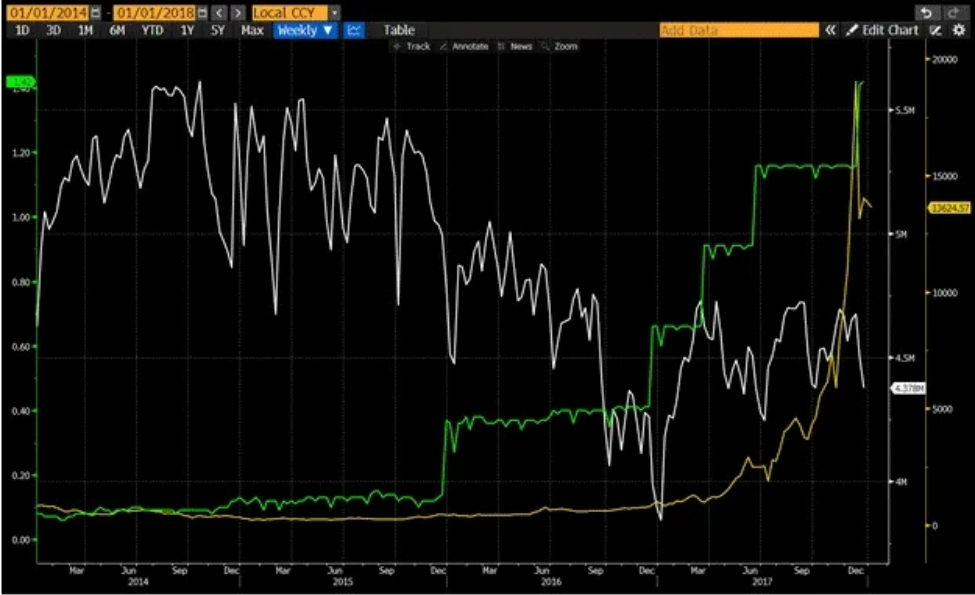
COVID 大流行:2017-2021
虽然 COVID-19 造成数百万人死亡,但全球政府政策次优加剧了危机。它成为限制自由的措施的借口,超越任何单一的政治意识形态。在“把一切都扔到墙上”的方式,这场大流行为美国在唐纳德·特朗普总统领导下的前所未有的刺激措施提供了掩护——这是自富兰克林·罗斯福新政以来最大规模的刺激措施。数万亿的印刷货币涌入加密市场。特朗普的政策点燃了所有资产。
美元图表:
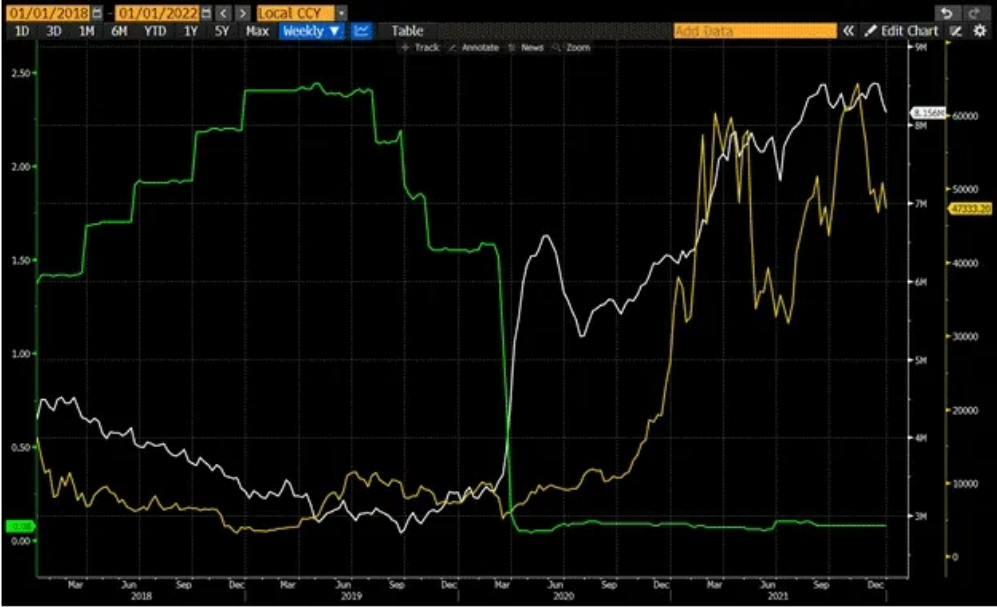
供应量翻了一番,货币价格暴跌至接近 0%。
人民币图表:
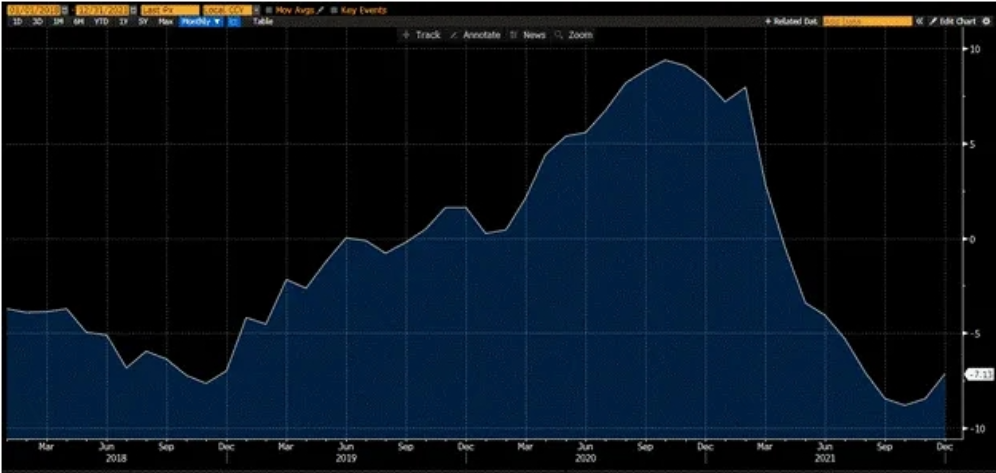
中国的信贷冲动在新冠疫情期间上升,但在习近平主席的领导下,它并没有得到积极的追求。他利用这段时间解决了房地产泡沫。这种水平的人民币信贷增长并没有阻止“三条红线”政策引发的当地住房崩溃——但这是故意的。通过严格的边境管制,资本外流和国内动荡得到了遏制。因此,中国的货币政策对这次比特币牛市没有做出实质性贡献。到 2021 年底,特朗普和随后拜登总统的政策导致的通货膨胀变得站不住脚。那些没有大量金融资产的人感到压力。联邦政府停止刺激措施,美联储开始缩表,并宣布快速加息——标志着牛市的结束。
新世界秩序:2021 年至今?
美国体系的单极主导地位正在逐渐消失,成为人们的怀旧之情。接下来会发生什么?全球领导人正在努力应对这种转变。变革会产生经济赢家和输家;当输家掌握政治或经济影响力时,它就会挑战现有者。为了保护民众免受干扰,政策制定者印钞。
这一次,信贷增长源于美联储的逆回购便利(RRP,以洋红色显示,y 轴倒置)。货币价格上涨,但供应下降。然而,为了刺激市场,财政部长珍妮特·耶伦发行的国债多于票据/债券,耗尽了建议零售价。这注入了约 2.5 万亿美元的流动性。她的继任者斯科特·贝森特 (Scott Bessent) 继续采用这种做法,直到今天 RRP 接近零。中国已进入通货紧缩阶段,信贷冲动为负面。习习主席仍然专注于遏制住房在经济中的巨大作用。如果美国/中国的政策前景没有其他信号或转变,我同意许多加密货币交易者的观点:牛市已经结束。但美联储和中国人民银行最近的言论和行动表明情况并非如此。
美元图表:
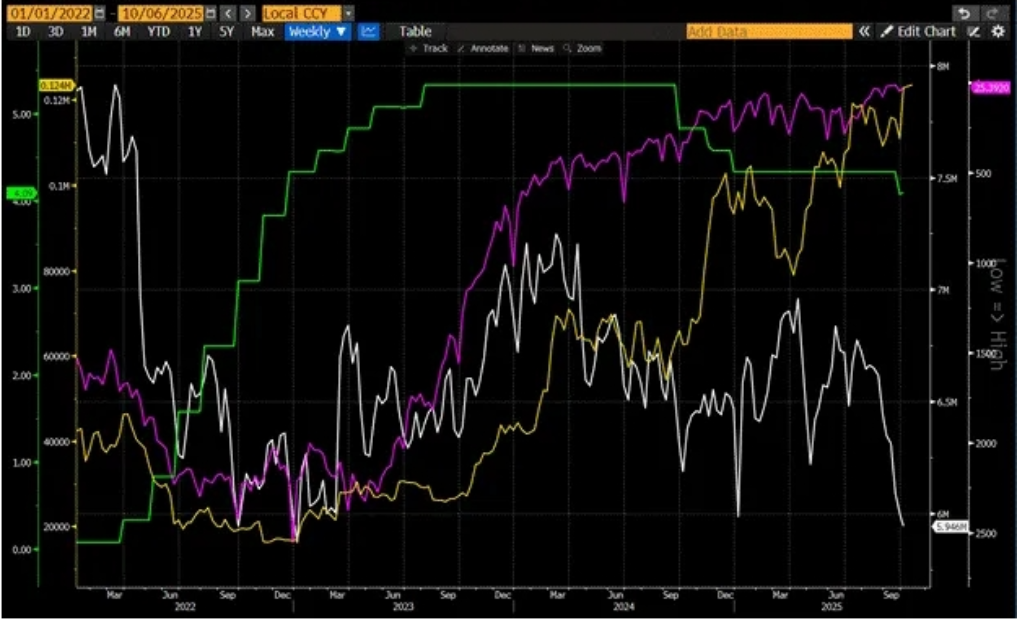
人民币图表:
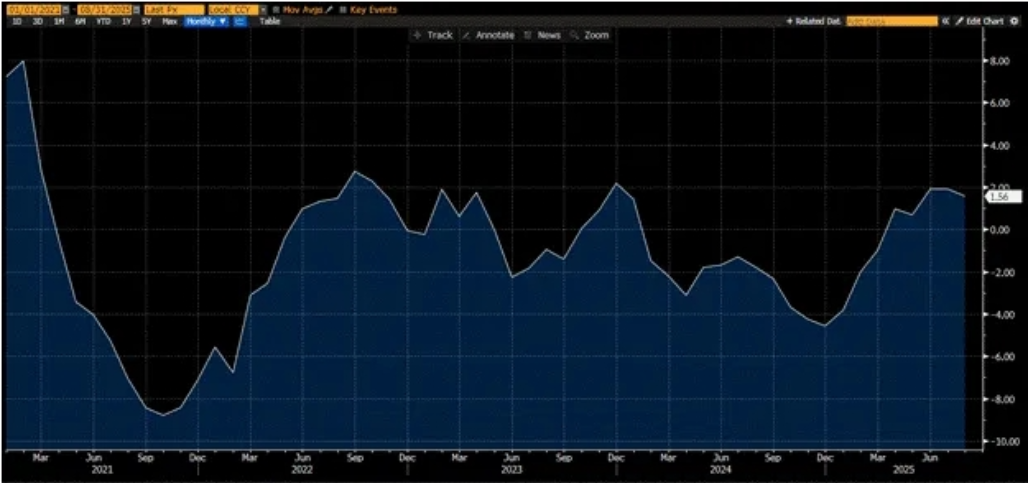
在美国,新当选的特朗普总统旨在推动增长以减轻债务负担。他批评美联储政策过于紧缩。他的愿景正在形成:尽管通胀超过了美联储的目标,但美联储在 9 月份恢复了降息。
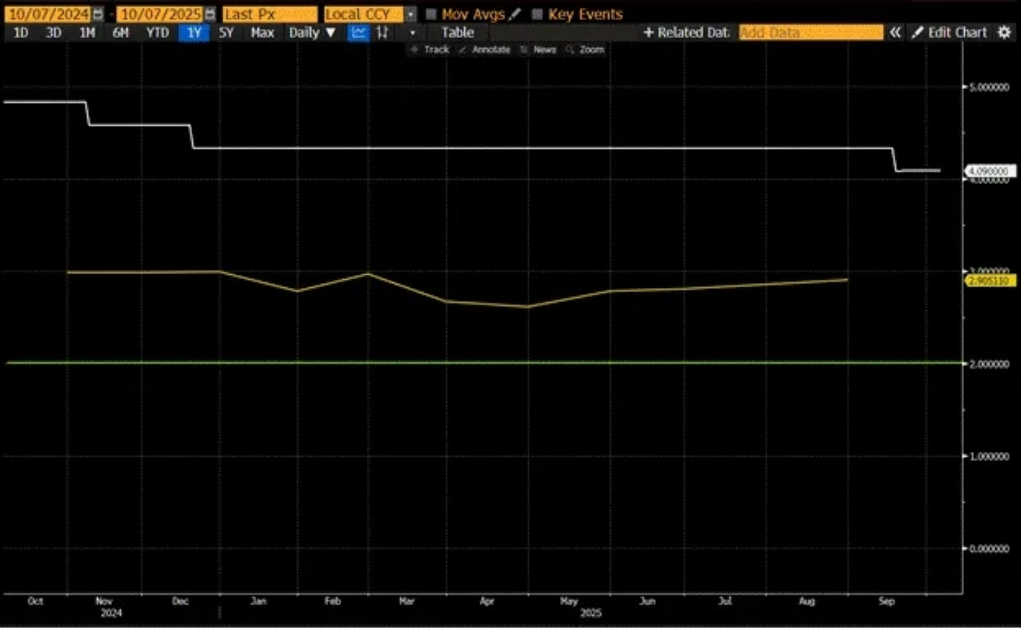
● 白线:有效联邦基金利率。
● 黄线:核心 PCE 通胀。
● 绿色水平线:美联储 2% 的目标。
特朗普总统还寻求降低住房成本,从 2008 年后的价格飙升中释放数万亿美元的受困房屋净值。
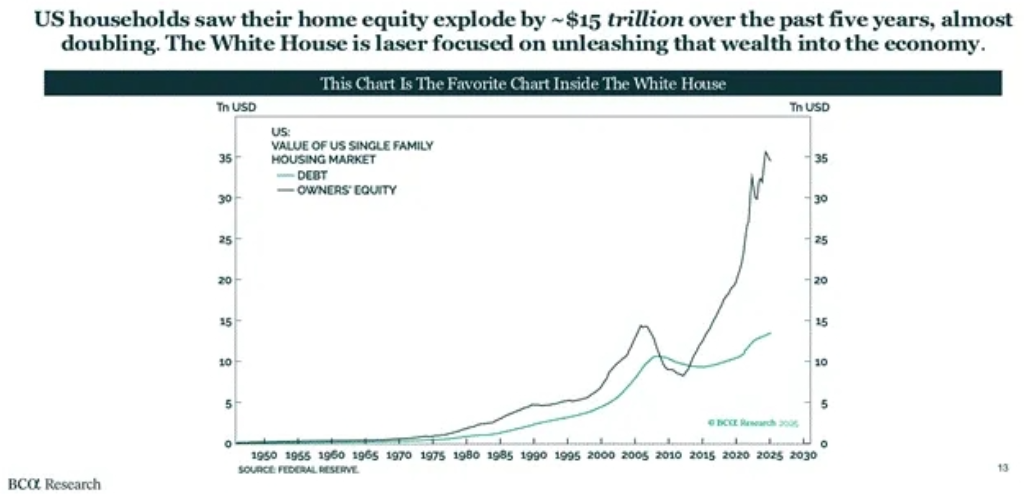
最后,斯科特·贝森特(Scott Bessent)计划放宽银行监管,向关键行业提供更多贷款。权力精英们设想的未来是利率下降(而不是更高)和货币供应量增长更高(而不是更低)。
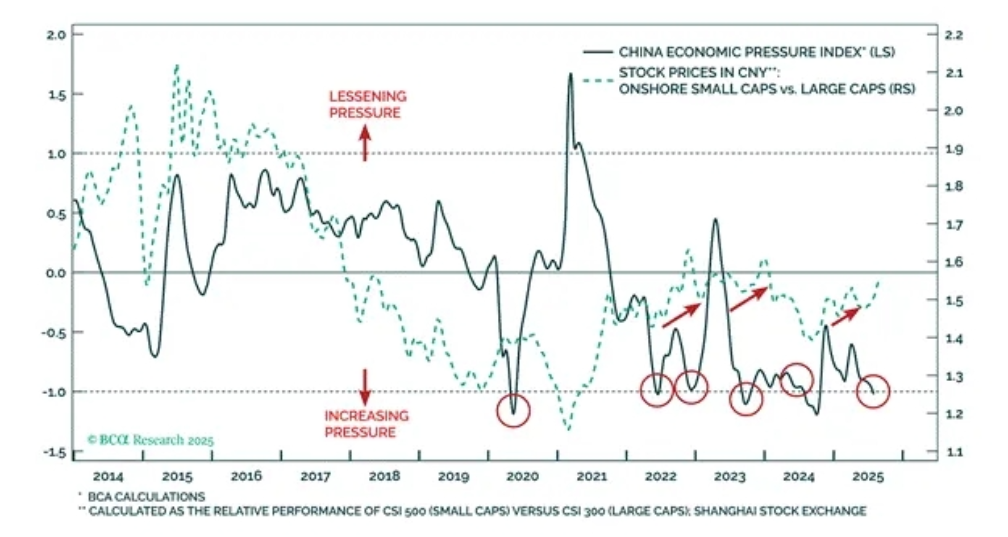
虽然北京当局避免了2009年或2015年的激进信贷发行,但它试图结束通货紧缩。当压力增加时(如上图所示),中国政策制定者会通过宽松政策进行干预。我怀疑中国现在是否会引领全球法定信贷增长,但它也不会阻碍它。
听听华盛顿和北京的货币当局的意见。他们预示着未来将有更便宜、更丰富的资金。因此,比特币在对这个可能的未来进行预期时上涨。旧政权衰落;新政权万岁!
(此处表达的任何观点均为作者个人观点,不应作为投资决策的依据,也不应被解读为进行投资交易的推荐或建议。)
免责声明:本文章仅代表作者个人观点,不代表本平台的立场和观点。本文章仅供信息分享,不构成对任何人的任何投资建议。用户与作者之间的任何争议,与本平台无关。如网页中刊载的文章或图片涉及侵权,请提供相关的权利证明和身份证明发送邮件到support@aicoin.com,本平台相关工作人员将会进行核查。




